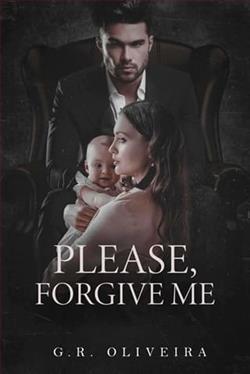Page 15 of The Only One Left
“Your uniform, of course.”
Mrs. Baker steps away from the door, allowing me to peek inside. The room is small but tidy. Butter yellow walls, a dresser, a reading chair, a large bookshelf blessedly filled with books. There’s even a view of the ocean, which under different circumstances would make my heart sing. But I’m too focused on the bed and the white nurse’s uniform sitting on top of it, folded as neatly as a napkin in a fancy restaurant.
“If it doesn’t fit properly, I can find a seamstress who’ll be able to do some alterations,” Mrs. Baker says.
I eye the uniform like it’s a ticking time bomb. “You seriously want me to wear this?”
“No, dear,” Mrs. Baker says. “Irequirethat you wear it.”
“But I’m not a nurse.”
“You are here.”
I should have known this was coming. I’d seen Jessica in her ridiculous maid’s outfit and Archie in his chef’s gear.
“I know you think it’s silly,” Mrs. Baker says. “The nurses before you did as well. Even Mary. But we abide by the old ways here. And those ways involve a strict dress code. Besides, it’s what Miss Hope is accustomed to. To deviate now would likely confuse and upset her.”
It’s that last bit that makes me concede defeat. While I don’t give a damn about abiding by the old ways—why follow them if no one is ever here to notice?—I can’t argue with not wanting to upset a patient. I have no choice but to suck it up and wear the uniform.
Mrs. Baker waits in the hall as I close the door and strip out of my coat, skirt, and blouse. On goes the uniform, which doesn’t quite fit. It’s loose at the hips, just right at the bust, and tight at the shoulders, making it simultaneously too snug and not snug enough. By the time the winged cap is pinned to my head, I feel positively ridiculous.
In the adjoining bathroom, I check to see how I look.
It’s... not bad, actually.
While undeniably formal, the tightness in the uniform’s shoulders makes me stand a little taller. Forced out of my perpetual slump, I appear less like a caregiver and more like a legitimate nurse. For the first time in months, I feel resourceful again. A refreshing change of pace.
Mrs. Baker certainly approves. When I emerge from the bedroom, she lifts her glasses to her eyes and says, “Yes, that’s much better.”
Then she’s off again, to the next door down the hallway.
Lenora Hope’s room.
I suck in a breath when Mrs. Baker opens the door, feeling the need to brace myself. For what, I don’t know. It’s not as if Lenora Hope will be standing just inside, a knife in one hand and a noose in the other.Yet that’s the only thing I can picture as Mrs. Baker gestures for me to step inside.
After another deep breath, I do.
The first thing I notice about the room is the wallpaper. Pink stripes. Exactly like in the portrait downstairs. The white divan is there as well, its fabric darkened by time but clearly the same one Lenora posed on. On the wall behind it is the gilt-edged mirror glimpsed in the portrait. Staring at the entire mirror—and my uniformed reflection in it—makes me feel a bit like Alice going through the looking glass. Instead of Wonderland, though, I’ve ended up inside the portrait of Lenora Hope and now stare at myself from outside the frame.
The next thing to catch my eye are the tall windows that face the Atlantic. The view beyond them is even more stunning than the one in the sunroom. The ocean is visible from here—a vast canvas of churning water that looks like a fun house–mirror version of the sky. Two blues, one scudded with clouds, the other whitecaps. The second floor’s higher vantage point gives me a better idea of how close the house is to the cliff’s edge. Right against it, in fact. There’s no land beyond the terrace railing. Just a straight drop directly into the sea.
Because of the slight tilt of the house, the view seems extra vertiginous. Even though I’m in the middle of the room, I feel like I have my forehead pressed against one of the windows, looking down. Another twinge of instability hits me, and I spend a fraught moment worrying I’m about to tip right over.
But then I finally notice the wheelchair parked in a corner of the room, facing the windows. It’s old-fashioned, constructed of wicker and wood, with two large wheels in front and a small one in the back, like a tricycle. The kind of wheelchair that hasn’t been used in decades.
In it is a woman, silent and still, her head lolled forward, as if she’s asleep.
Lenora Hope.
My vertigo fades in an instant. I’m too spellbound by Lenora’s presence to notice the tilted floor anymore. Or the view out the windows.Or even the presence of Mrs. Baker behind me. All I can focus on is Lenora, seated in that old-timey wheelchair, bathed in sunlight so bright it makes her look pale, almost translucent.
The infamous Lenora Hope, reduced to a ghost.
Everything about her, really, seems sapped of color. Her robe is threadbare and gray, as are the slippers on her feet. Gray socks run to just below her knees, where they bunch and sag. The nightgown under the robe was likely white once upon a time, but too many washings have left it the same ashen shade as her skin. The grayness extends to her hair, which is kept long and straight and cascades down her shoulders.
It isn’t until Lenora lifts her head that I see a single bit of color.
Her eyes.















